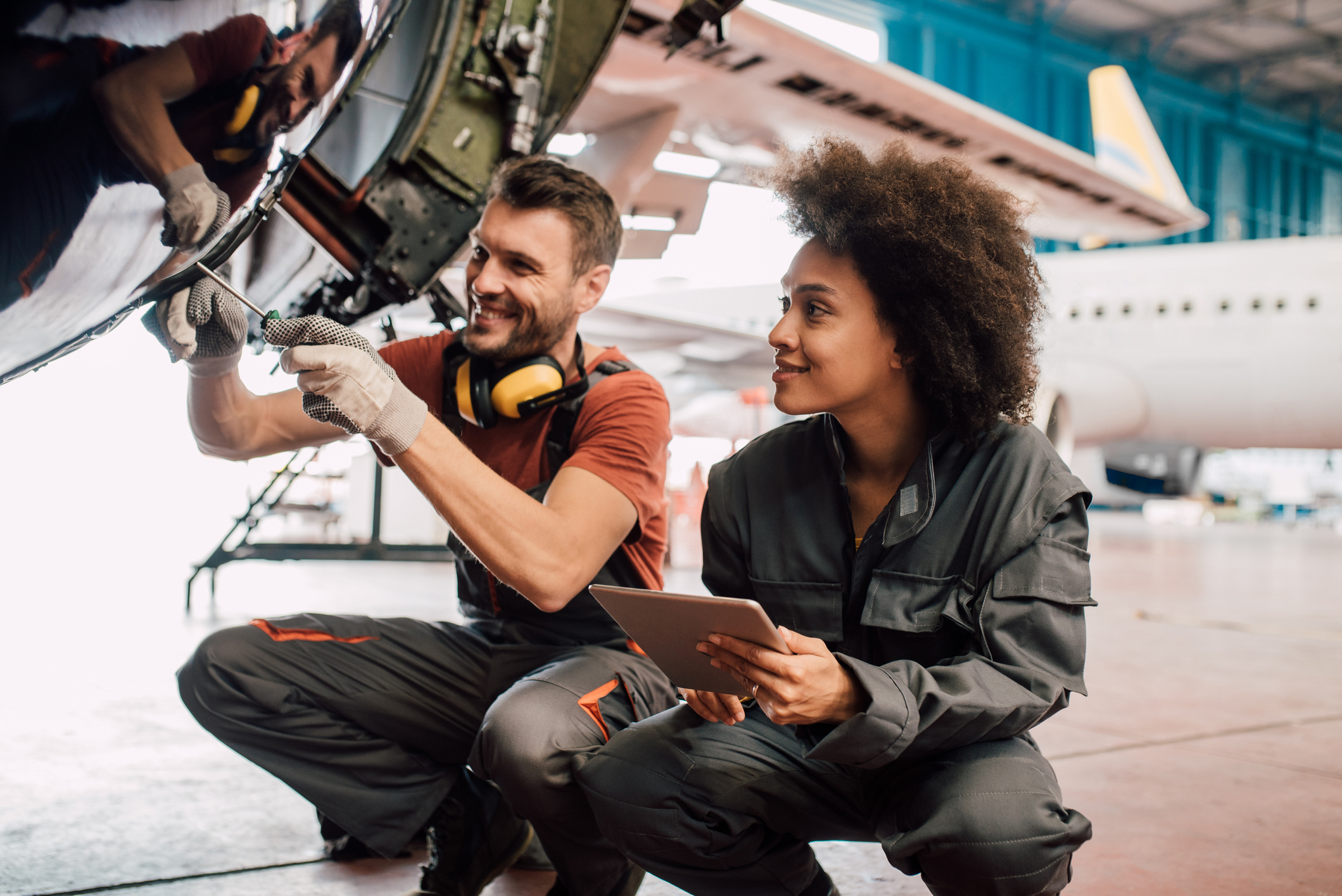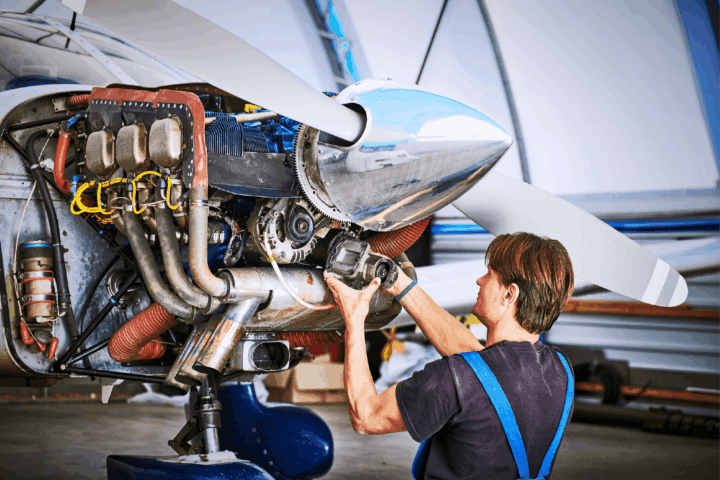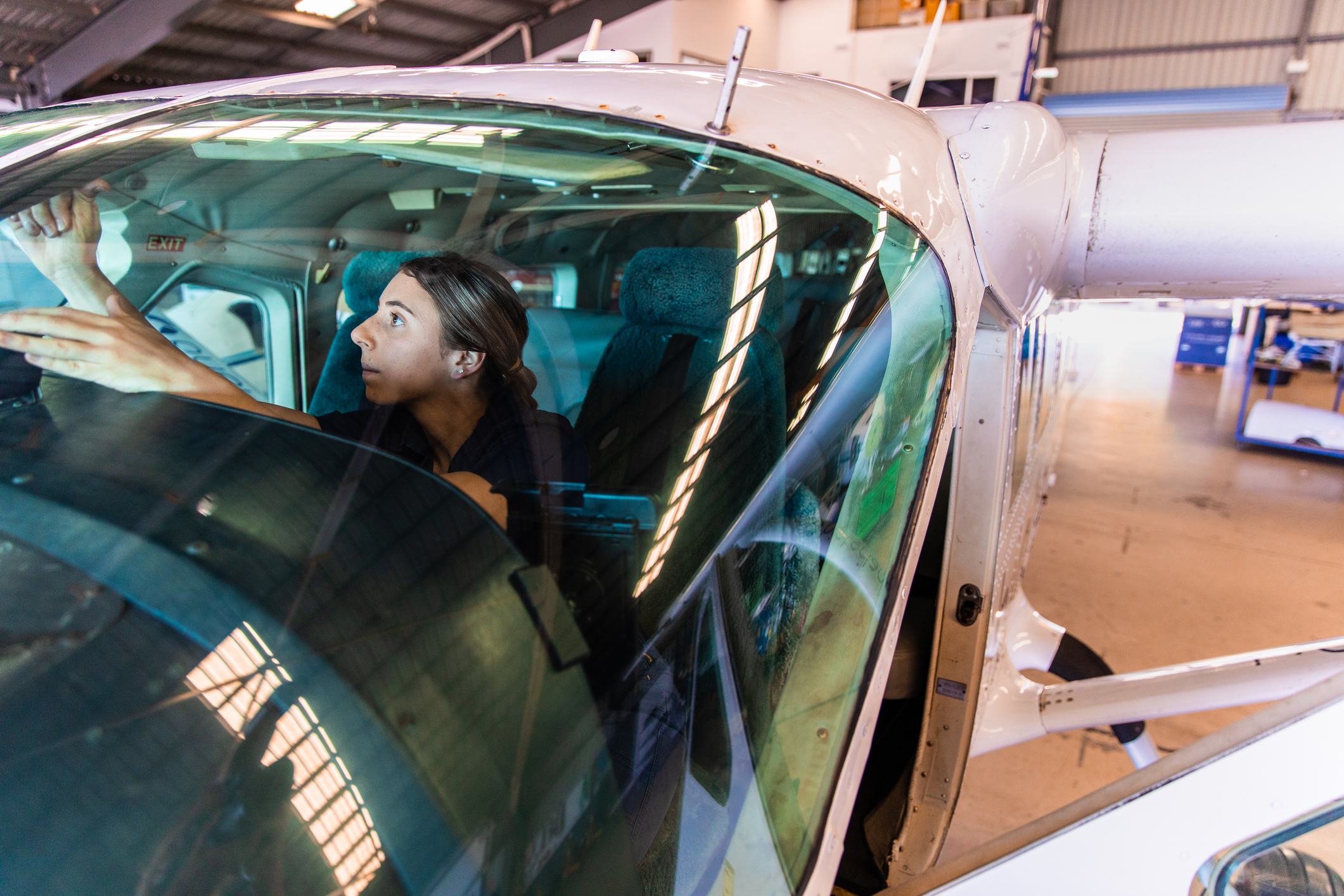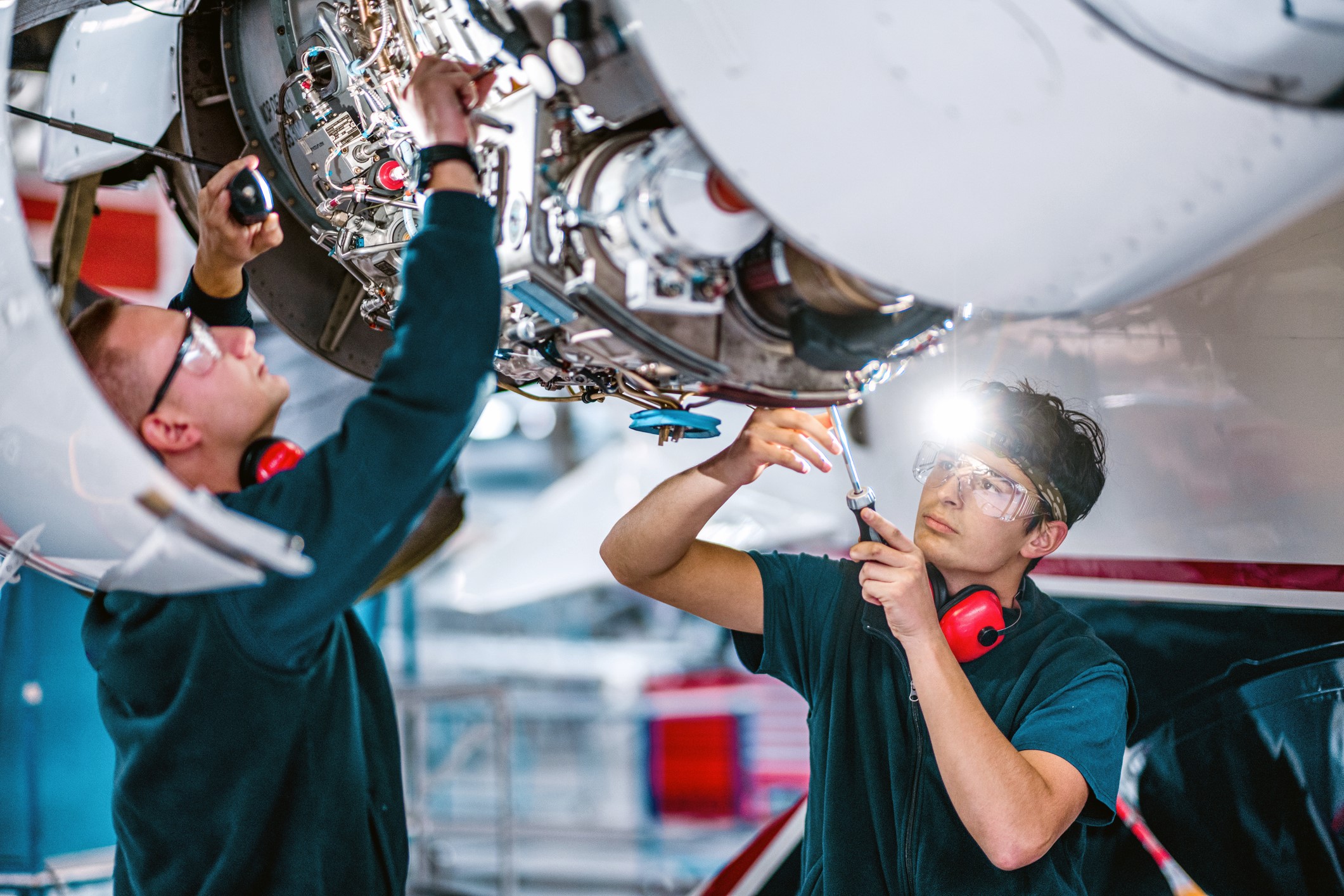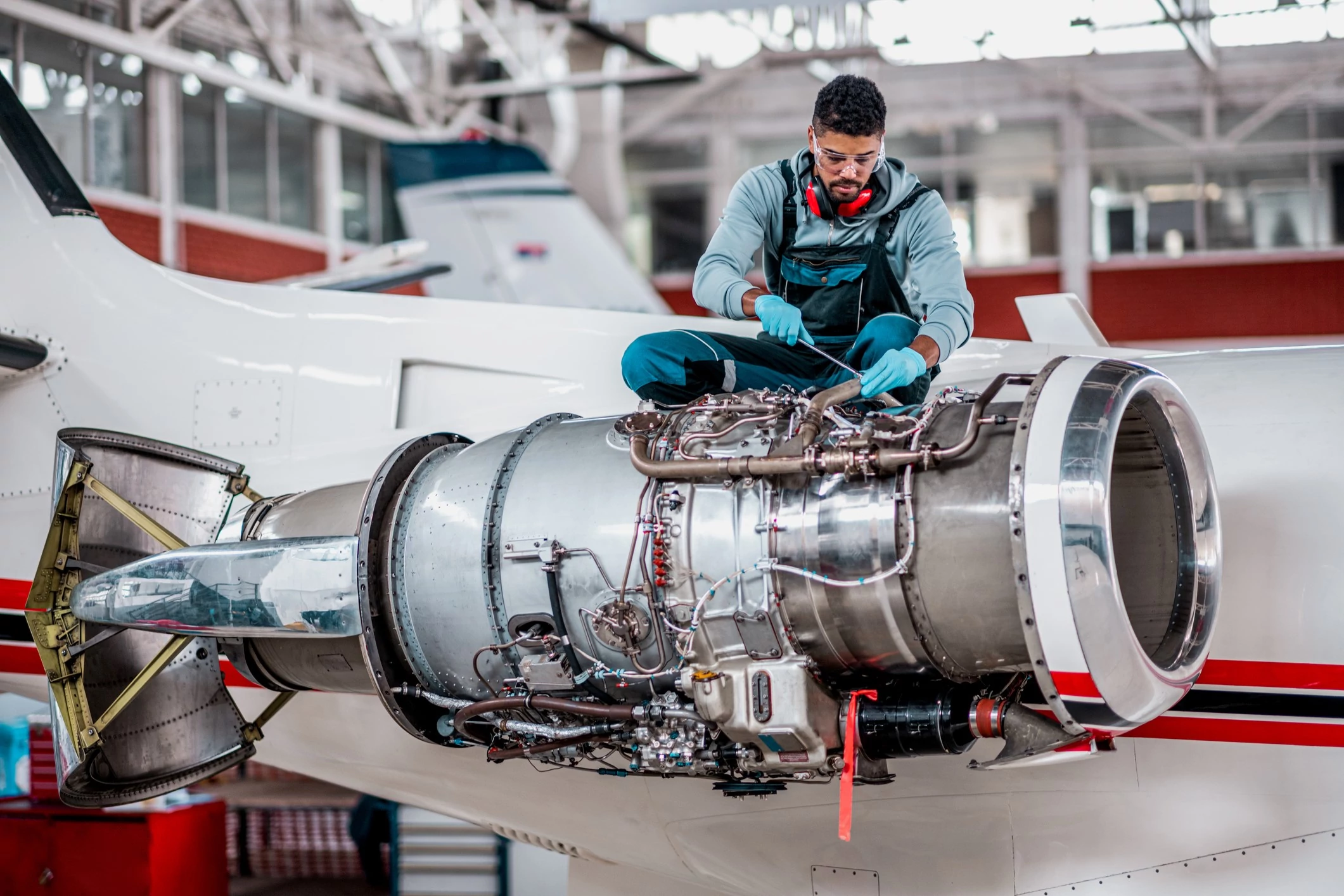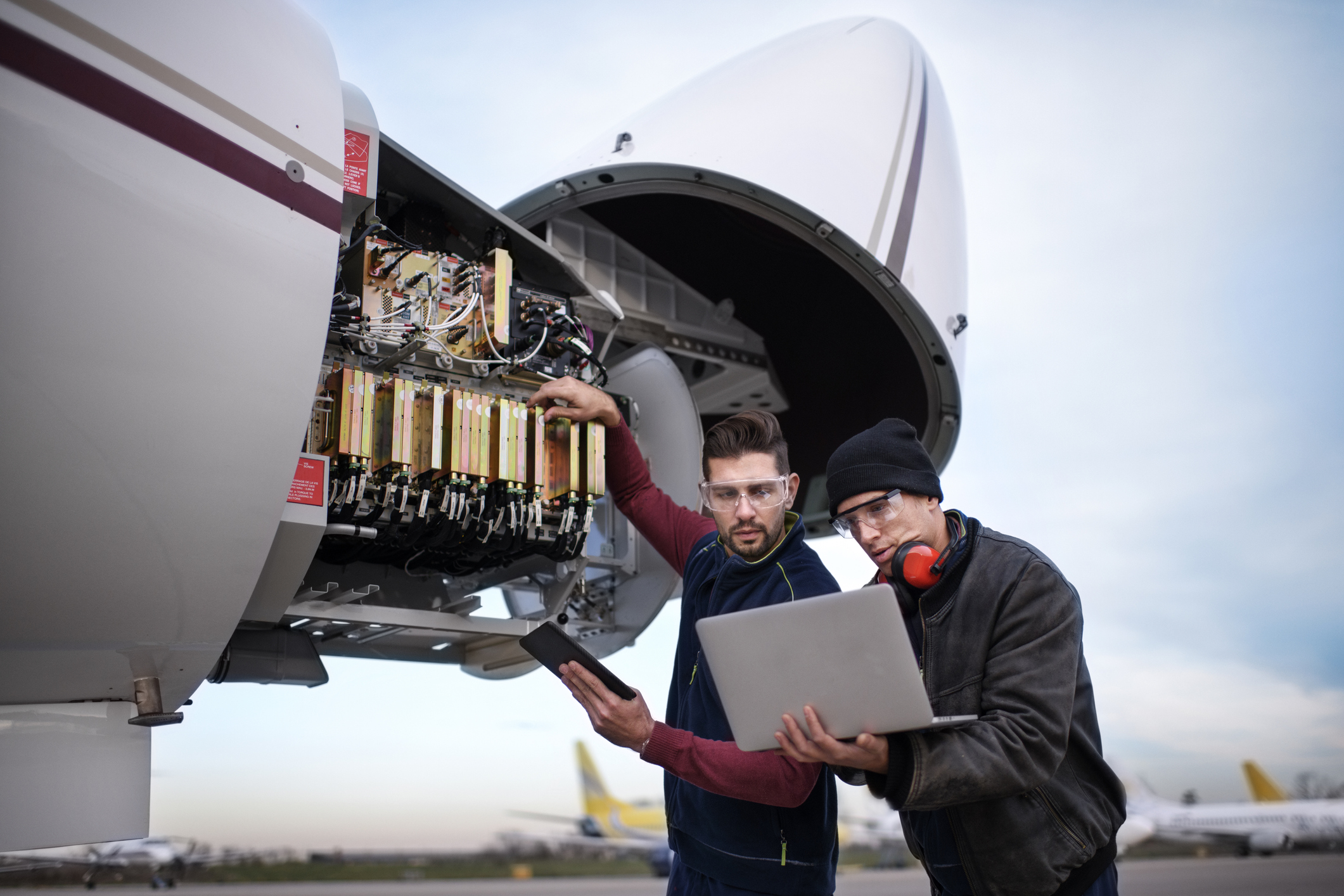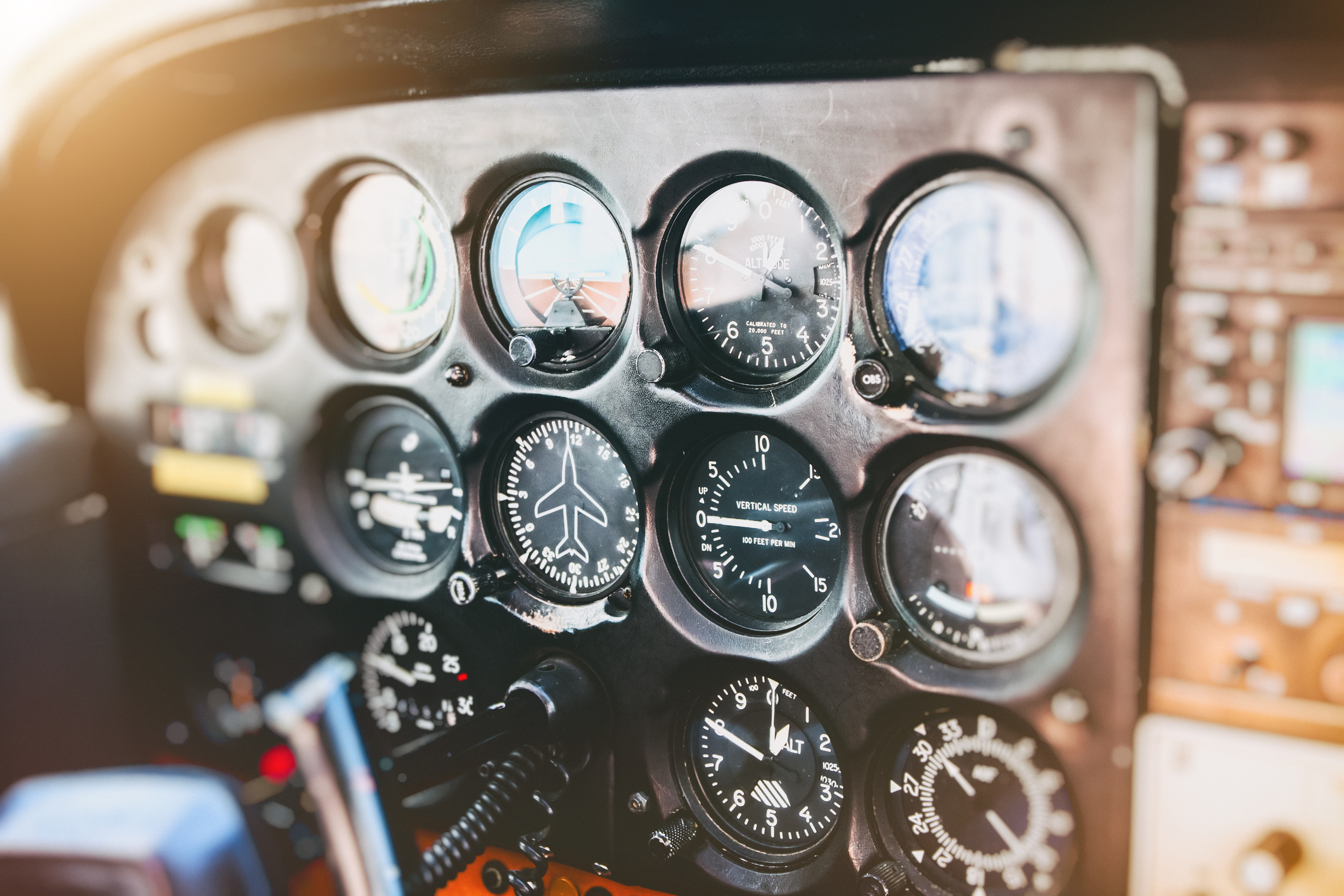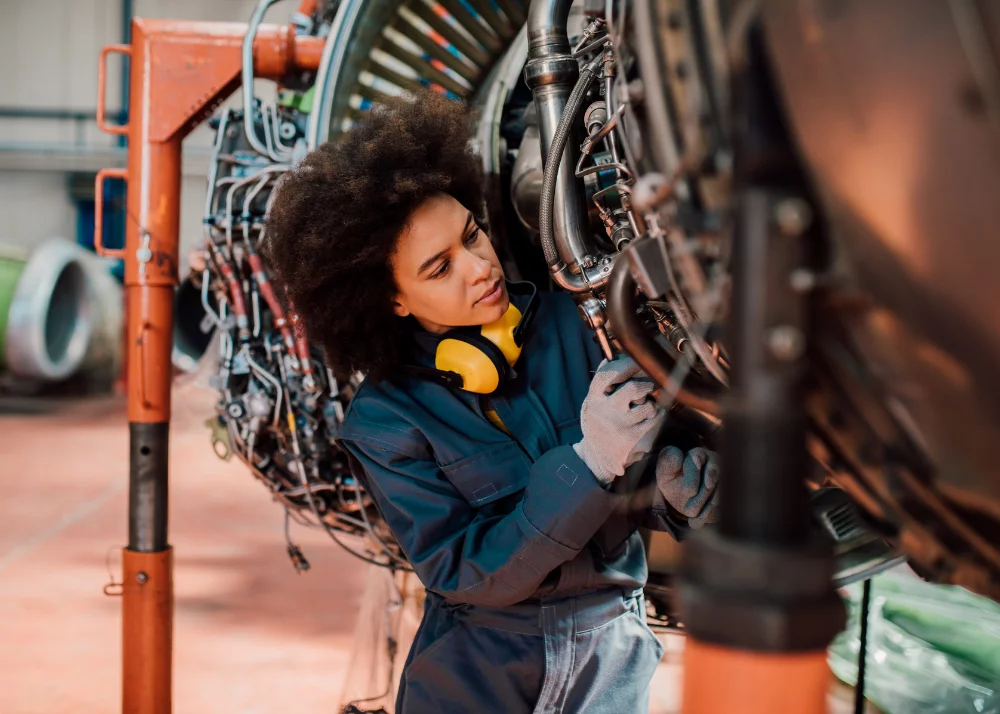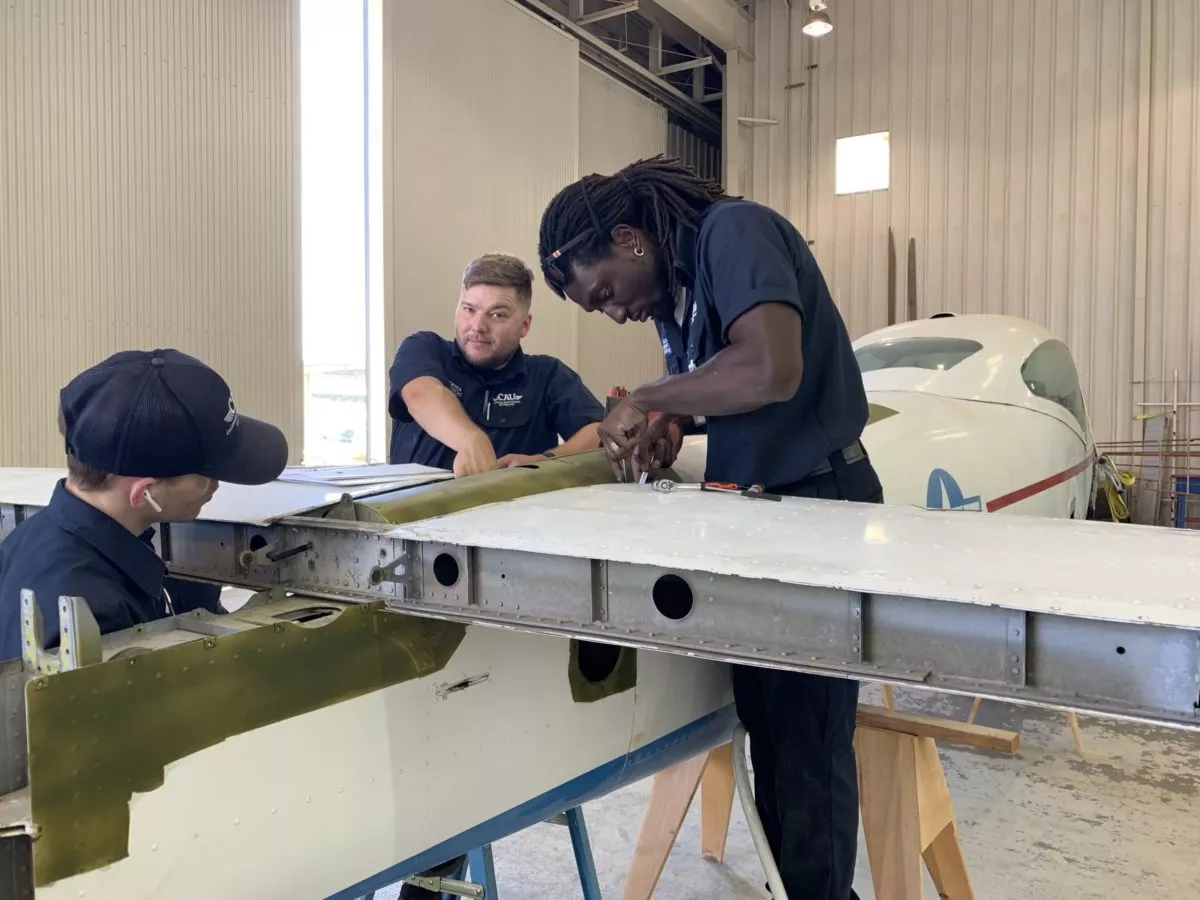Recent statistics on the projected employment trends for aviation maintenance careers show faster-than-average growth. As a result, interest levels are rising for aircraft maintenance technician training programs in this industry. There could be bright futures in preventing aviation accidents for those passionate about air-transportation safety, who also possess mechanical abilities and are willing to learn.
There are a variety of opportunities for skilled aviation mechanics. Some aircraft maintenance technicians are generalists and work on various aircraft types, such as single-engine jets or helicopters. Others may specialize only in inspecting and repairing one particular aircraft section, such as the electrical or hydraulic system, engine, or brakes.
What Is Aircraft Maintenance?
Aircraft maintenance can be described as the standard checks carried out on aircraft after a certain time or usage. However, it also includes activities beyond routine maintenance, such as upgrades and comprehensive quality assurance, that assure the safety and efficiency of the aircraft.
Maintaining aircraft may also involve repairing necessary parts to sustain the international standard mandate by responsible authorities like the Federal Aviation Authority (FAA), International Civil Aviation Organization (ICAO), etc.
It encompasses all the measures and activities performed to ensure that each and every aircraft is safe and fit to fly. This can range from pre-flight checks, 50- and 100-hour inspections, and annual reviews through progressive inspections to drone and predictive maintenance.
Doing this kind of work means you might need to become an FAA-certified Aviation Maintenance Technician (AMT). This aircraft maintenance technician training will prepare you to perform electronic inspections, function checks, troubleshoot, and rectify problems in several careers and occupations.
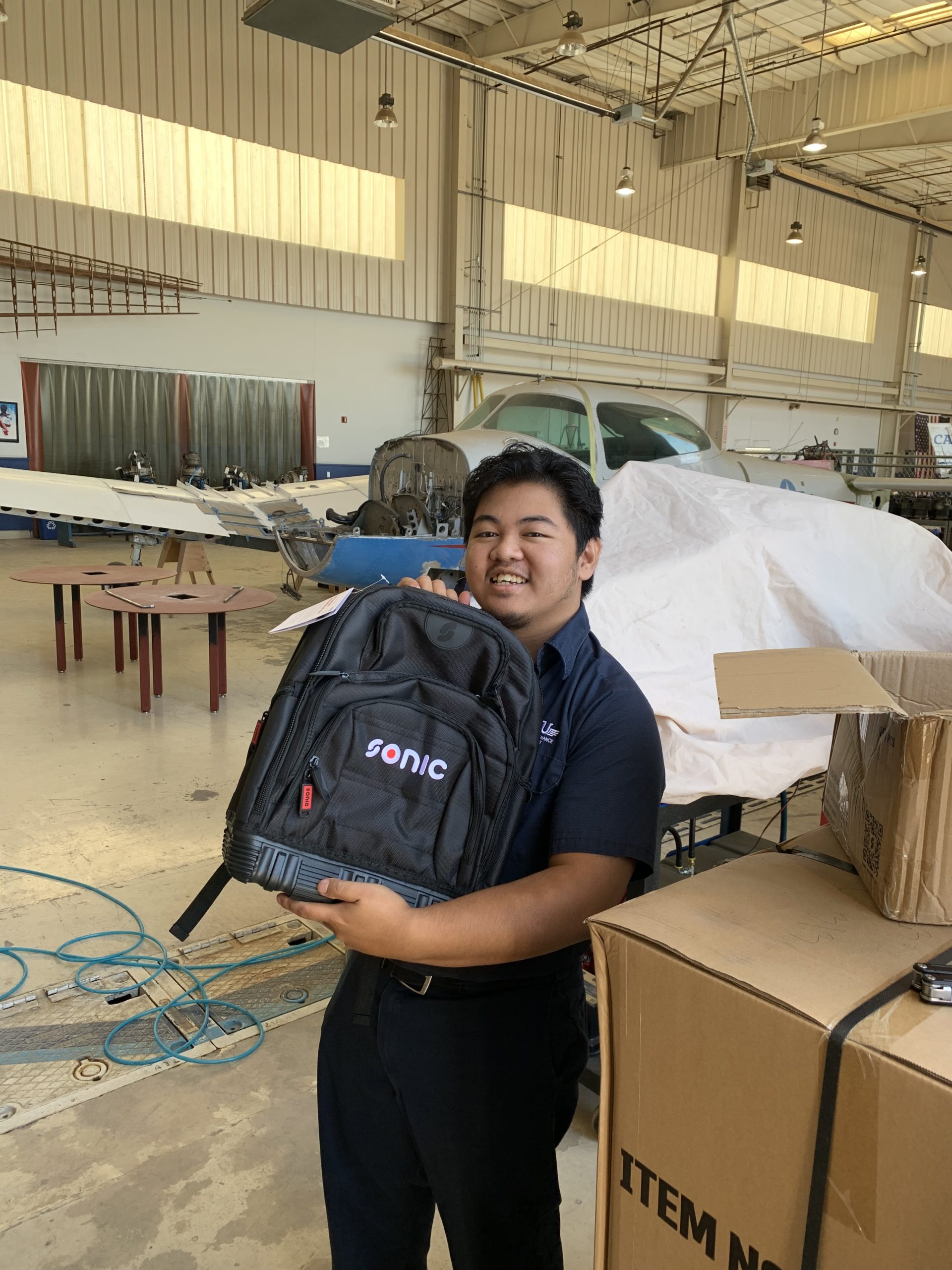
What Makes a Successful Aircraft Technician?
An effective aircraft technician provides safe and reliable aircraft by completing scheduled and unscheduled maintenance per company, FAA, and OEM guidelines, using relevant facilities and equipment. Top maintenance techs strive to be proactive, resourceful, organized, knowledgeable, and consistent in their work.
Aircraft Maintenance Technician Training Basics
The complexity of aircraft maintenance might be confusing. Therefore, knowing some basics before beginning your aircraft maintenance technician training would be helpful. Some include choosing the right program, time duration of aircraft maintenance technician training, financial aid and benefits, and potential career prospects.
How to Choose the Right AMT Training Program
It is possible for some aircraft technicians to enter the profession with a high school diploma (or GED), receive on-the-job training from a licensed mechanic, and learn the skills to pass the FAA exams. However, the FAA requires a minimum number of training hours as well as mandatory certification. Some questions to ask as you do your research:
- Is the program an FAA-certified, Part 147 approved school?
- Does it prepare you for A&P Certification?
- Does your program come with anything extra? What makes your program special/different?
- How long does the program take?
If you can, tour as many schools as possible, either virtually or in person. Speak to current students, faculty, and instructors, and ask them any questions you have. Try to get a sense of the program to see if it is a good fit for you.
How long is aircraft maintenance training?
Ideally, aircraft maintenance technician training duration should not extend beyond three years. Most programs take between 1-2 years, with the average being about seventeen months.
Consider Financial Aid for AMT Training
Another advantage of researching several programs is investigating financial aid packages. Several aviation universities offer financial assistance to those who qualify, although each school’s requirements will be different (some may be similar).
Help may be available through grants, loans, work-study programs, or scholarships. If you are in the military, you may also be eligible for veteran benefits. Be sure to check to see if the school you are interested in participates in the Yellow Ribbon program.
Career Prospects
Many programs and schools offer job placement assistance, including resume review, employment lead development, and interview preparation. Additionally, some universities have strong industry partnerships with airlines and other aviation businesses. Graduates can leverage those relationships to assist in achieving first steps and opportunities towards career goals.
Aviation is a growing industry that needs qualified aircraft mechanics to maintain the global fleet. If you want to know more about the aviation maintenance technology program at California Aeronautical University, please contact us! We look forward to hearing from you!
Ready to soar in your aviation career?
Mr. Matthew A. Johnston has over 23 years of experience serving various roles in education and is currently serving as the President of California Aeronautical University. He maintains memberships and is a supporting participant with several aviation promoting and advocacy associations including University Aviation Association (UAA), Regional Airline Association (RAA), AOPA, NBAA, and EAA with the Young Eagles program. He is proud of his collaboration with airlines, aviation businesses and individual aviation professionals who are working with him to develop California Aeronautical University as a leader in educating aviation professionals.
